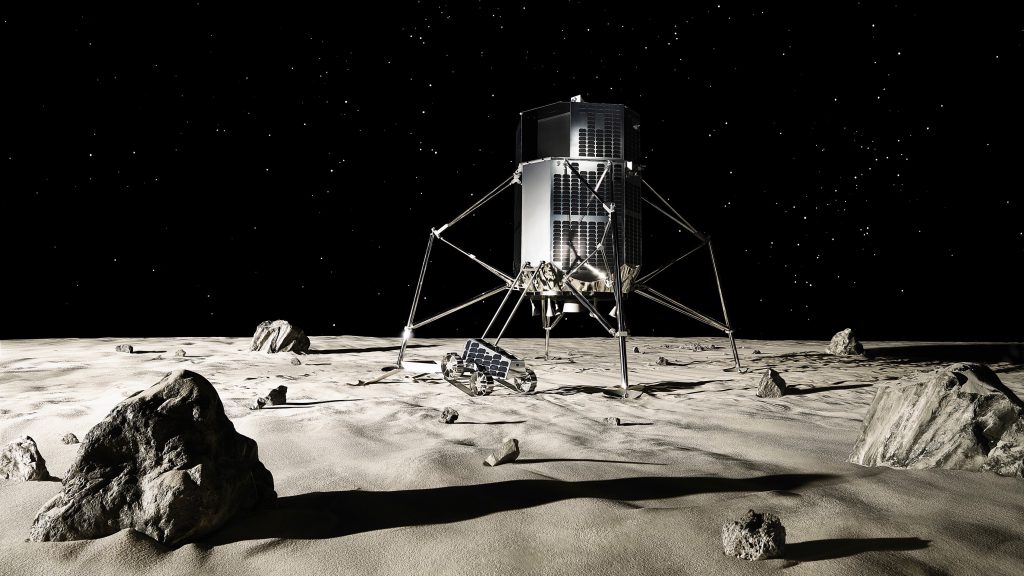Japanese Startup ispace to Launch Moon Lander Missions on SpaceX Rockets

A Japanese company that aims to help humanity explore and settle the moon will fly its first two lunar missions with SpaceX.
The Tokyo-based startup ispace has contracted to launch its lunar lander and mini-rovers as secondary payloads atop SpaceX's Falcon 9 rockets in 2020 and 2021, representatives of both companies announced today (Sept. 26).
"We share the vision with SpaceX of enabling humans to live in space, so we're very glad they will join us in this first step of our journey," ispace founder and CEO Takeshi Hakamada said in a statement. [Moon Base Visions: How to Build a Lunar Colony (Images)]
The two-phase first step is known as Hakuto-Reboot, or Hakuto-R for short. The name is a reference to Team Hakuto, an ispace-managed entrant in the now-defunct Google Lunar X Prize (GLXP), a contest that promised $30 million in prizes for the first teams to successfully land privately built rovers on the moon. The GLXP ended earlier this year with no winners.
The 2020 ispace mission will be considered a success if the lander achieves lunar orbit, company representatives said. The following year, the goal is to put a lander down softly on the moon's surface and to deploy data-gathering rovers from the craft.
Both of these missions — which ispace is bankrolling via its Japanese-record haul of more than $90 million in "Series A" investment funding — are technology demonstrations designed to lay the groundwork for the startup's ambitious future plans. Eventually, ispace aims to set up a robotic lunar transportation service and use its bantam rovers to identify and help exploit the resources available on Earth's nearest neighbor, such as water ice.

Such work could help lead to the establishment of a permanent human settlement on the moon in the not-too-distant future, company representatives have said.
Get the Space.com Newsletter
Breaking space news, the latest updates on rocket launches, skywatching events and more!
ispace also released imagery of its newly redesigned lunar lander and rover today. The company had previously stated that the lander would be capable of toting 66 lbs. (30 kilograms) of payload to the moon, and that the rover would be based heavily on the 9-lb. (4 kg) vehicle that Team Hakuto was planning to launch as part of the GLXP.
ispace isn't the only company interested in selling transportation services to the moon's surface and tapping lunar resources. For example, the plans of the U.S. companies Astrobotic, Blue Origin and Moon Express all seem to overlap at least somewhat with those of ispace.
"We are entering a new era in space exploration, and SpaceX is proud to have been selected by ispace to launch their first lunar missions," SpaceX President Gwynne Shotwell said in the same statement. "We are looking forward to delivering their innovative spacecraft to the moon."
Follow Mike Wall on Twitter @michaeldwall and Google+. Follow us @Spacedotcom, Facebook or Google+. Originally published on Space.com.
Join our Space Forums to keep talking space on the latest missions, night sky and more! And if you have a news tip, correction or comment, let us know at: community@space.com.

Michael Wall is a Senior Space Writer with Space.com and joined the team in 2010. He primarily covers exoplanets, spaceflight and military space, but has been known to dabble in the space art beat. His book about the search for alien life, "Out There," was published on Nov. 13, 2018. Before becoming a science writer, Michael worked as a herpetologist and wildlife biologist. He has a Ph.D. in evolutionary biology from the University of Sydney, Australia, a bachelor's degree from the University of Arizona, and a graduate certificate in science writing from the University of California, Santa Cruz. To find out what his latest project is, you can follow Michael on Twitter.









